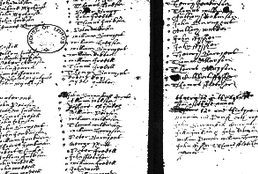THE PROTESTATION 1641-43
Charles I had been forced to summon a new Parliament in 1640. This set about punishing his highly unpopular officials - some 200,000 gathered to watch the execution of his first minister, the Earl of Strafford.
The Protestation emerged out of this unrest. It was an attempt to commit everyone to the Protestant religion, after a long period in which Roman Catholicism had been tolerated at court.
The idea was that everyone (or maybe just every male) over the age of 18 was to declare loyalty to protestantism. Those that refused were to be punished (in general, by being removed from any official office).
‘I, AB, doo in the Presence of Almightie god promise vow and protest to maintaine and defend, soo far as lawfully I may, with my life power and estate, the true reformed protestant religion …’
Local officials were first summoned to the local market town to take the oath before justices of the peace. Their names were recorded - this took place on 25 February 1641/2. They returned to their parishes where they supervised the oath taking by their parishioners, again recording the names. So there are two possible lists for each place.
The lists were returned to the House of Commons. In due course they were archived in the House of Lords, thus avoiding destruction in the Commons fire of 1834.
Many of these ‘returns’ have been lost, but Cumberland coverage is almost complete. Nineteen of the parishes include women. One parish includes signatures and marks. One parish includes ages.











